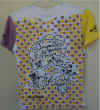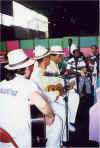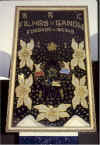Brazilian Popular Music
The Roots of Brazilian Music - Part III - A Brief History of Carnaval and Its Music
Brazilian carnaval has its origin in the old Portuguese pre-Lent celebration known as the entrudo. People celebrated by throwing little balls of wax filled with perfumed water - and sometimes other liquids, as well...- at each other. Anyone could be a victim of the celebrants: it is said that in the midst of the revelry the Emperor Dom Pedro II was once thrown into a water tank! But carnaval as it came to be celebrated in Rio de Janeiro started with the first masked ball in 1840. In 1850 there was the first procession with adorned floats, and after 1856 costumed revelers began taking to the streets in great numbers. The first cordões (groups of all male revelers) were formed in the mid-nineteenth century. In 1837, a Christmas rancho (a group of men and women representing shepherds going to Bethlehem) started another tradition by joining the carnaval celebrations.
Carnaval Music and Street Carnaval
Until 1899 no songs were written expressly for carnaval, and people danced to music of European inspiration with the exception of the cordões which often paraded to Afro-Brazilian rhythms. It was in that year that Chiquinha Gonzaga (1847-1935) wrote the marchinha "O Abre Alas" (Make Way) for the group Rosa de Ouro, incorporating one of those rhythms. The marchinha (little marching song, literally) was the perfect musical formula to which the crowds could move in an organized fashion.
In 1917 the samba appeared officially with the recording of Pelo Telefone (On the Telephone). From its origins the new genre was closely linked to carnaval. Stimulated by radio a whole generation of carnaval composers appeared after 1920 and these would be responsible for all the great marchinhas and sambas that continue to be popular today.
These marchinhas were vehicles to eulogize women and to criticize politicians and certain aspects of Brazilian life and mores. The lyrics were printed in pamphlets or booklets and distributed to the public in the months before carnaval so everyone could learn them by heart. In these early days carnaval was a time of genuine fun for adults and children alike. There were automobile parades downtown Rio, with tons of paper confetti and streamers, and people went to the beach in elaborate paper costumes.
 In the summer of 2006 music critic Sérgio Cabral and Rosa Maria Araújo produced the musical Sassaricando, starring Eduardo Dussek and Soraya Ravenle, among others. The absolutely infectious music (all carnaval marchinhas) is on this two-CD set, a Biscoito Fino release.
In the summer of 2006 music critic Sérgio Cabral and Rosa Maria Araújo produced the musical Sassaricando, starring Eduardo Dussek and Soraya Ravenle, among others. The absolutely infectious music (all carnaval marchinhas) is on this two-CD set, a Biscoito Fino release.
Fortunately it is still possible to enjoy street carnaval with the groups called blocos or bandas that are followed by tens of thousands in the neighborhoods of Rio. They have whimsical or humorous names like Suvaco do Cristo (Christ's Armpit, because participants live in the area under the famous statue of Christ) or Simpatia É Quase Amor (Sympathy Is Almost Love) from Ipanema, or Escravos da Mauá downtown. The oldest and most traditional, Cordão do Bola Preta, opens the celebrations Saturday morning at 9; they also have dances and parties all year long at their headquarters downtown Rio. Schedules start to appear online and in the local papers a couple of weeks in advance, so you can plan where and when you'll be dancing on a certain day. Hooray for small blocos also and all those unforgettable marchinhas...But, guys, get rid of those stupid foam cans and the beer carts in the middle of the crowds! It's becoming unbearable to go out after our favorites!!
One of the most fascinating expressions or manifestations of carnaval in Rio are the "clóvis" or "bate-bolas." Typical of suburban Rio, these are groups of revelers with a closely-knit, almost tribal relationship between its members. Their elaborate costumes, which they themselves design, hand paint, and sew, are based on a "theme," often using pop culture elements. If you have a chance, try to catch a wonderful documentary about the clóvis called "Carnaval, bexiga, funk e sombrinha" by Marcus Vinícius Faustini. Filmed in 2005, it shows a group that used Disney characters to represent the cardinal sins, with Minnie representing lust...if you can believe it.
The escolas de samba
The first escolas de samba were founded in Rio de Janeiro in 1928 (the short-lived Deixa Falar) and in 1929 (Estação Primeira de Mangueira). These were neighborhood groups of blacks and mulattos who wanted to make music and parade during carnaval. The name school apparently has to do with the fact that there was a real school nearby. Some sambistas say that it was chosen because they "taught samba" like a school teaches other subjects...






